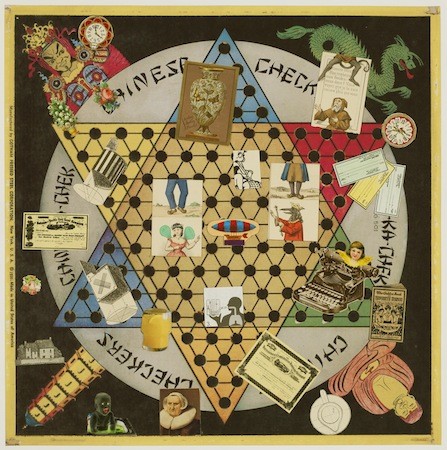Star-crossed

I knew John Ashbery before I met him, by which I mean that I subsequently realized that I’d adopted in my teens and early twenties more or less the same tastes and attitudes as John had a generation earlier.
I actually first came across John’s name as the translator of an essay on Raymond Roussel, the French protosurrealist writer who felt from early childhood that he was predestined for greatness, to the extent that he thought he had been born with a star on his forehead.
Written by Michel Leiris, the essay “Confection and Reality in the Work of Raymond Roussel” was published in the spring 1964 issue of “Art and Literature.” Reading the essay was to change my life as an artist at the impressionable age of twenty-one, describing as it did several of the techniques Roussel had utilized in writing his bizarre books, techniques that I myself would later use to paint my own bizarre paintings.
The article that John had translated also contained a wealth of Rousselian anecdotes, including the occasion when Roussel had visited the great French astronomer Camille Flammarion. Such was Roussel’s admiration for Flammarion that, after their meal was over, Roussel kept a little star-shaped cookie as a souvenir, and subsequently had a star-shaped glass container specially made to preserve his pastry treasure.
A few months after reading John’s translation, I learned that the translator himself was due to give a reading of his own poetry at the American embassy in London. I cut classes at the Royal College of Art where I was a student in order to attend, and I’m glad I did, since it changed my life just as surely as the Roussel article. Not that I actually met John at the reading — I was far too shy to introduce myself. Little did I know at that time that John was a shy person himself.
I realized through John’s reading that poetry could be as rich and inventive as painting and contain as many ideas and — this was especially important to me as a young painter — contain as many images as a painting. I later realized that it was the richness of John’s vocabulary that led automatically to a richness of imagery, as it had for Roussel.
To close his reading, John read his poem “The Skaters,” a poem which concluded with the lines:
To refuse the square hive, postpone the highest …
The apples are all getting tinted
in the cool light of autumn.
The constellations are rising
in perfect order:
Taurus, Leo, Gemini[1]
The final lines hit me with the force of a thunderbolt, relating as they did to Roussel’s little star-shaped cookie I’d become obsessed with, and also because simultaneously I was becoming enamored with Joseph Cornell’s boxes, many of which had astronomical charts pasted onto their rear surfaces.
John and I were obviously on the same wavelength, since a couple of years later, when he reviewed a Cornell retrospective, he concluded the review with the spot-on observation that, and I quote:
The genius of Cornell is that he sees and enables us to see with the eyes of childhood, before our vision got clouded by experience, when objects like a rubber ball or a pocket mirror seemed charged with meaning, and a marble rolling across a wooden floor could be as portentous as a passing comet.[2]
This conflation of the large with the small, adult vision with childhood vision, was important to both John and Roussel, too, and became one of the characteristics of my own painting, mainly as a result of reading John’s Cornell article.
Jump ahead another year or so, when I’d moved from London to New York. John arranged that we should make a pilgrimage together to visit Joseph Cornell in his nondescript house on the inappropriately named Utopia Parkway in darkest Queens. I took along a copy of Roussel’s “New Impressions of Africa” as a present, a volume ending with a drawing of a star-filled sky.
After eating some rather unbearably hard — if not downright stale — cookies that Cornell had specially bought from the only automat in Manhattan that still had the gall to sell them, we all three went downstairs to Cornell’s workplace in the basement, a spooky basement straight out of Psycho. The workplace was lined with shelves laden with various-sized boxes, bearing such labels as “silver balls, clay pipes, white sand, stardust.” As Cornell was opening one of his thimble peepshows on the table before us, I noticed a cheap, transparent jewel box beside my elbow. It contained a heap of glass stars.
1. John Ashbery, Collected Poems (New York: Library of America, 2008), 147.
2. Ashbery, “Joseph Cornell,” in Reported Sightings (New York: Alfred A. Knopf, 1989), 13.
John Ashbery and the arts
Edited byThomas Devaney Marcella Durand